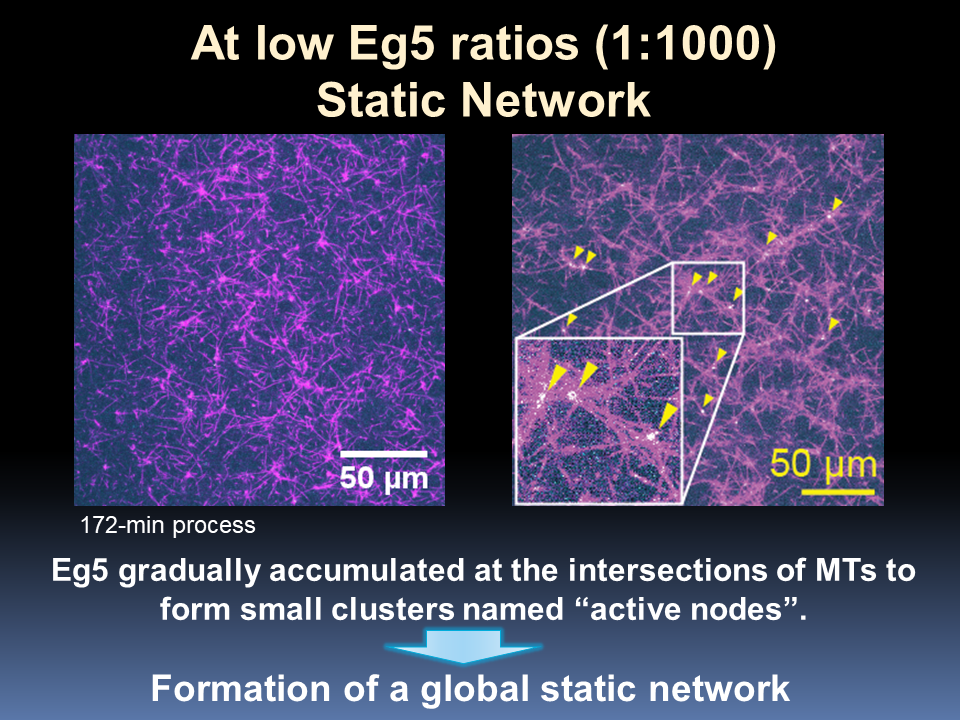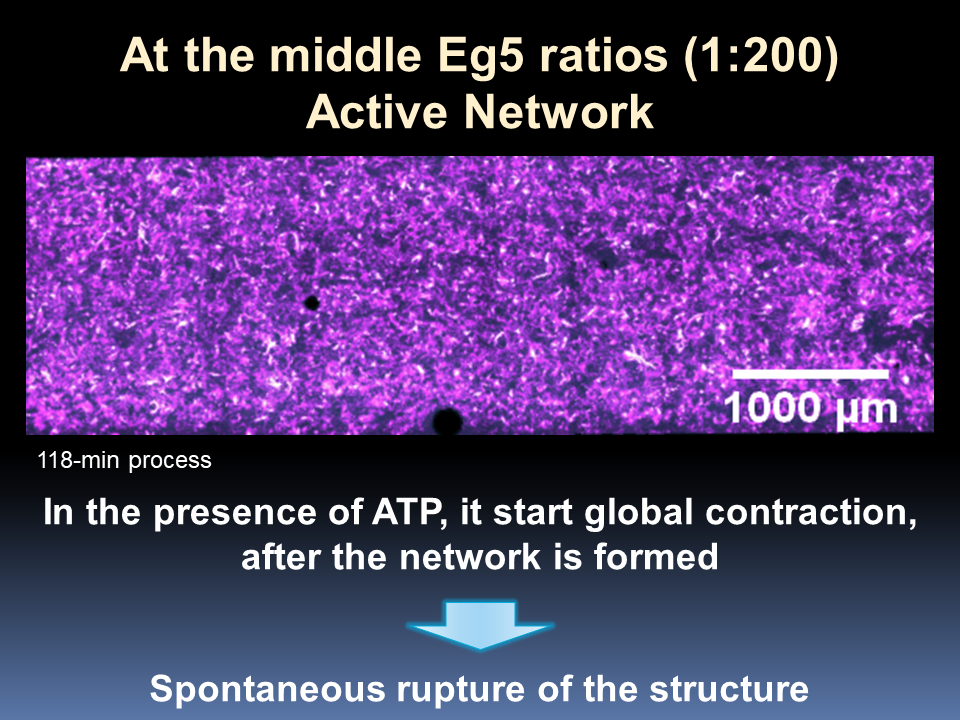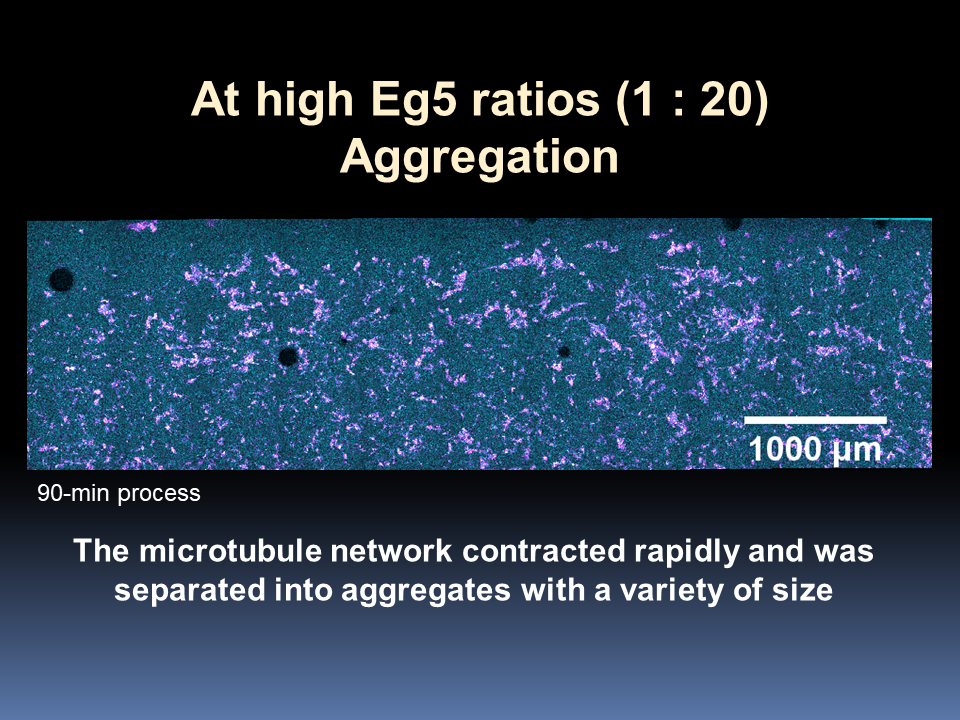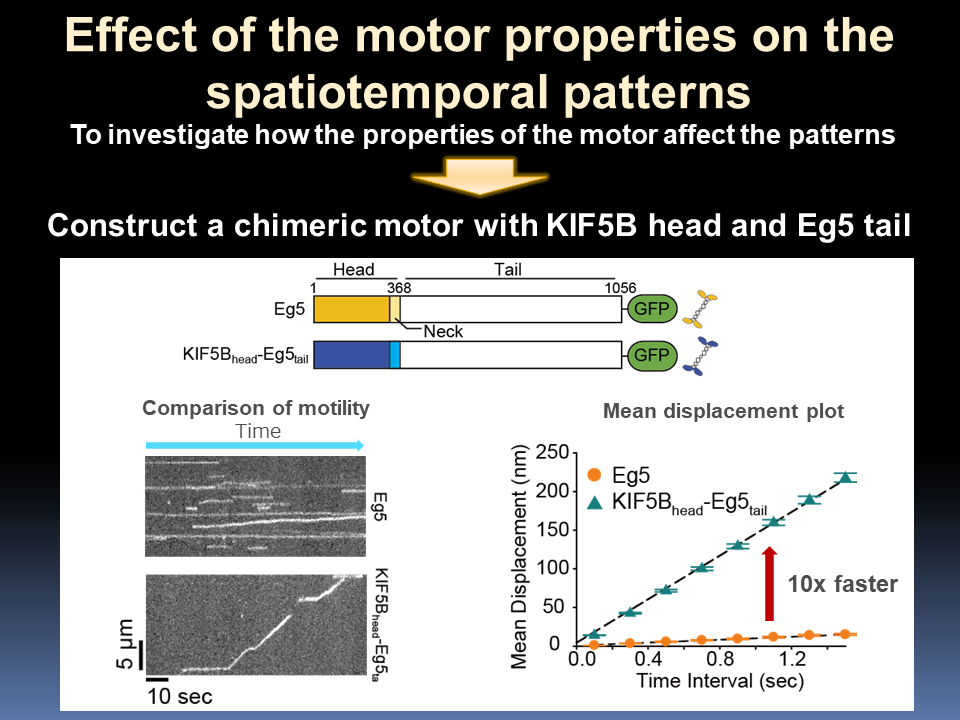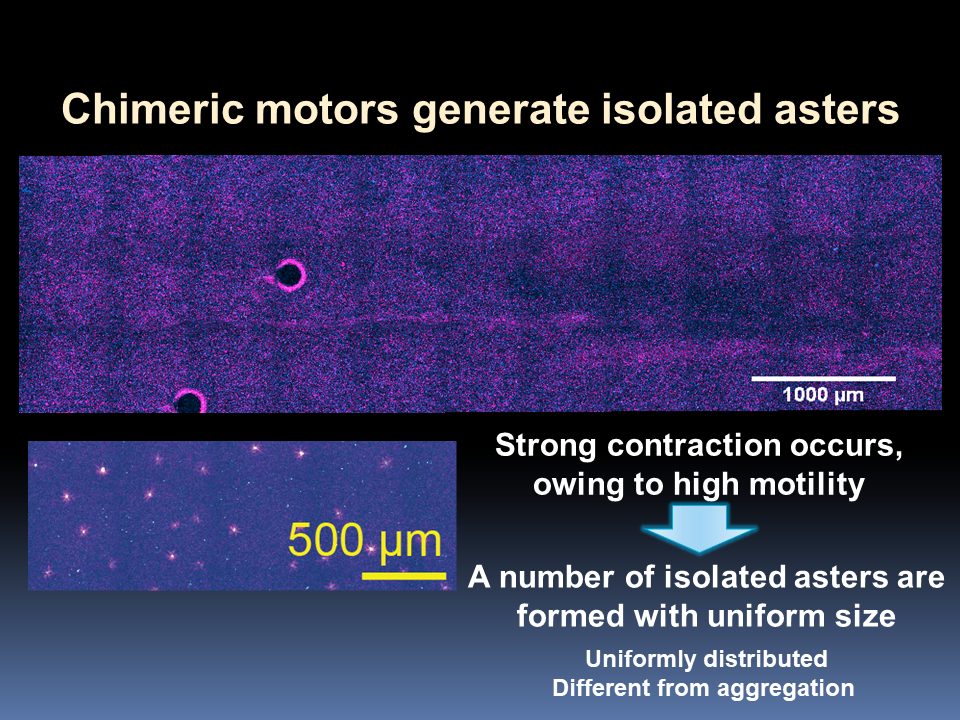Research agenda
"Cell-cell adhesion・Elucidation of the mechanism of order formation of the skeleton and development of epithelial barrier manipulation technology"
Research period:October 2013 - March 2018
Principal Investigator:Tsukiko TSUKITA(Professor,Graduate School of Frontier Biosciences, Osaka University)
Research contributor : Kazuhiro OIWA
Outline / Purpose / Methods / Results
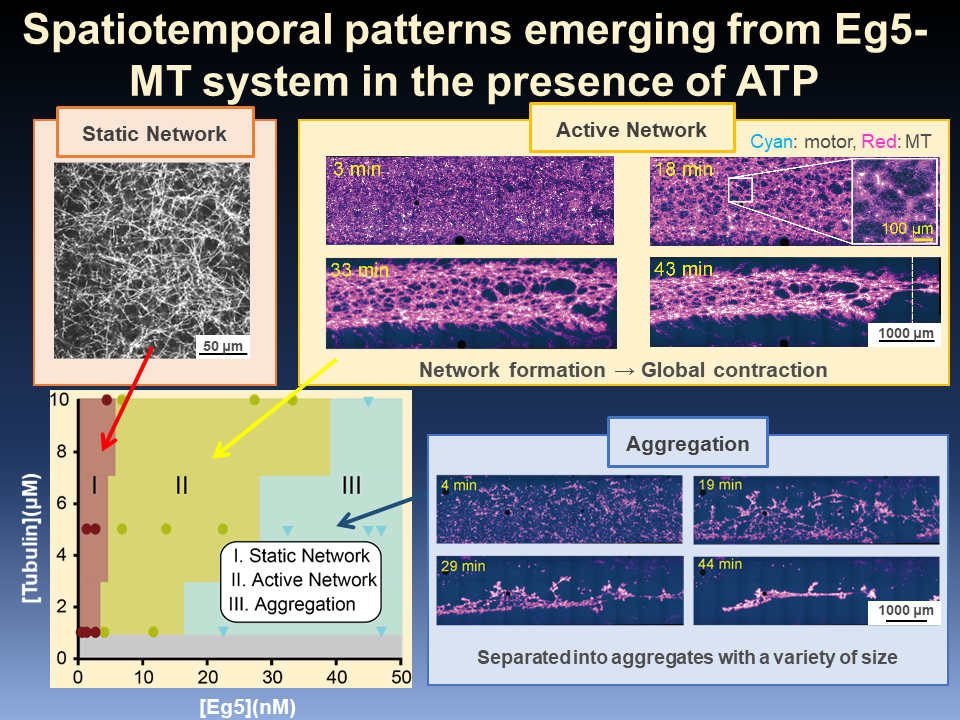
"Kinesin - 5 accumulates at the plus end of the microtubule to form an aster structure.
However, when the concentration is low, the overall structure that connects the asters does not change (a static network).
However, when the concentration of kinesin - 5 is increased, the entire microtubule network begins to shrink slowly, and eventually a part of the network collapses to produce a rapid contraction.
In a network of actin filaments, such contraction has been frequently observed and reported at a micrometer scale.
Actin filaments are 200 times more flexible than microtubules, and they are made of relatively short filaments.
However, the mechanism of contraction in microtubules that tend to form a radial structure, such as an aster, rather than a linear structure, is greatly different from the size of the actin.
By observing all of the experimental cisternae that spread in millimeters, it was finally observed that the whole microtubule network was contracted.
This contractility depends on the concentration and mechanical properties of the protein motor that firmly grips the end of the microtubule.
When the characteristics of the motor were changed, it was confirmed that the uniform and small asters were formed by dispersing them in the entire experimental tank.
These observations are thought to provide new insights into the general principles of protein filament contractility.
The contraction of the entire network by kinesin - 5 is also important for understanding the behavior of the spindle.
This is because this kinesin is responsible for the formation and elongation of the spindle in cell division.
The observed contractions may reproduce the phenomena that occur during spindle formation or spindle elongation."
